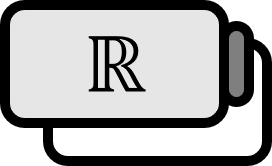Cantor's Intersection Theorem
Definition1
A sequence $\left\{ S_{n} \right\}_{n=1}^{\infty}$ of a set is said to be nested if for every natural number $n$, $S_{n+1} \subset S_{n}$ holds.
Explanation
The translation of nested might not be smooth, but since there is no better alternative, it is recommended to just memorize it as “Nested.”
Theorem
For the nested interval $[a_{n}, b_{n}]$, the following holds:
(a) $\displaystyle \bigcap_{n=1}^{\infty} [a_{n}, b_{n}] \ne \emptyset$
(b) Specifically, if $\displaystyle \lim_{n \to \infty} (b_{n} - a_{n}) = 0$ then $\displaystyle \bigcap_{n=1}^{\infty} [a_{n}, b_{n}]$ is a singleton set.
A singleton set is a set that contains only one element.
Proof
(a)
Given that for all natural numbers $n$
$$ [a_{n+1} , b_{n+1} ] \subset [a_{n} , b_{n} ] \\ a_{1} \le a_{n} \le b_{n} \le b_{1} $$
by the axiom of completeness, there are two numbers
$$ a:=\sup \left\{ a_{n} \right\} \\ b:=\inf \left\{ b_{n} \right\} $$
Since for all natural numbers, $a_{n} \le a \le b \le b_{n}$ holds, it follows that $[a,b] \subset [a_{n} , b_{n} ]$, hence
$$ \bigcap_{n=1}^{\infty} [a_{n}, b_{n}] \ne \emptyset $$
■
(b)
Assuming $\displaystyle \lim_{n \to \infty} (b_{n} - a_{n}) = 0$, since $a=b$
$$ \bigcap_{n=1}^{\infty} [a_{n}, b_{n}] = \left\{ a \right\} = \left\{ b \right\} $$
■
See Also
William R. Wade, An Introduction to Analysis (4th Edition, 2010), p55 ↩︎

 저희들이 쓴 줄리아 프로그래밍 서적이 출간되었습니다. 손님 여러분의 많은 관심 부탁드립니다! 링크▼
저희들이 쓴 줄리아 프로그래밍 서적이 출간되었습니다. 손님 여러분의 많은 관심 부탁드립니다! 링크▼

